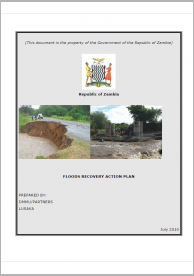
Recovery Action Plan with specific activities and costing that result from the proposed recommendations in the 2009/2010 In-Depth Vulnerability and Needs Assessment Report that was undertaken in 17 districts.
The following is a list of all conten labeled as "Governance"

Recovery Action Plan with specific activities and costing that result from the proposed recommendations in the 2009/2010 In-Depth Vulnerability and Needs Assessment Report that was undertaken in 17 districts.
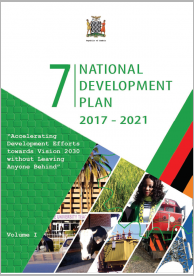
The Seventh National Development Plan (also known as 7NDP) was born out of Zambia's aspiration to be a prosperous middle-income country by 2030. To achieve this aspiration, it is imperative that the country articulates the processes, interventions and actions that will propel development towards this desired state.
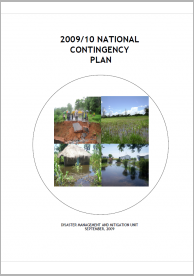
This contingency plan covers the 2009-2010 rainy season with the likely scenario of having floods as a hazard. This scenario is based on the 2009-2010 rainfall forecast for the country obtained from the Zambia Meteorological Department (ZMD). It anticipates that a total population of 713,193 people (118,866 households) residing in 43 districts are likely be affected by floods.
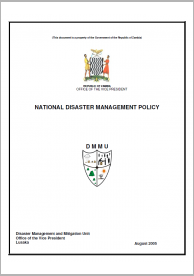
This national disaster management policy framework for Zambia is intended to help the disaster management regime to assume and play a coordinating and implementation role before, during and after disaster outbreaks.

This Manual is prepared in the context of Zambia’s current needs in the area of disaster management and shall be used as an instrument for the implementation of the National Disaster Management Policy as well as identified activities before, during, and after a disaster situation.
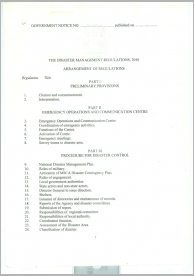
Arrangement of Regulations; Makes provisions for Emergency operations and communication centre, procedures for disaster control, disaster management volunteer and related issues.
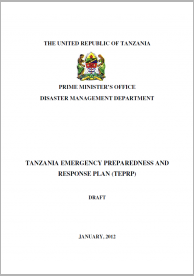
The TEPRP is a Multi-Hazards functional plan that sets forth appropriate actions to be taken in response to an emergency or major disaster including potential or imminent threat of any event. The TEPRP aims to facilitate the coordination for the delivery of resources and services necessary to deal with the consequences of an emergency or major disaster.
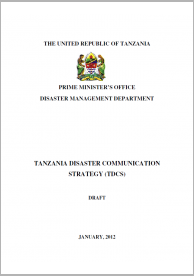
The purpose of Tanzania Disaster Communication Strategy (TDCS) is to ensure operability, interoperability and continuity of communications to allow emergency responders to communicate as needed, on demand, and as authorized at all levels of the government.
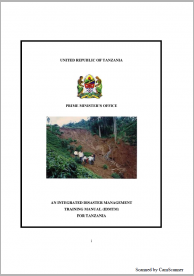
The IDTMTM was developed to promote efforts addressing disaster issues in Tanzania, informing the public about the major disasters that affect the community.

The existing mechanisms for disaster management are inadequate in respect to mitigation, preparedness and recovery aspect. It is through this fact that the disaster management policy is seen as necessary to create effectiveness and efficient disaster management in the country as well as systematically support the global and regional initiatives to curb disaster impact to vulnerable groups.